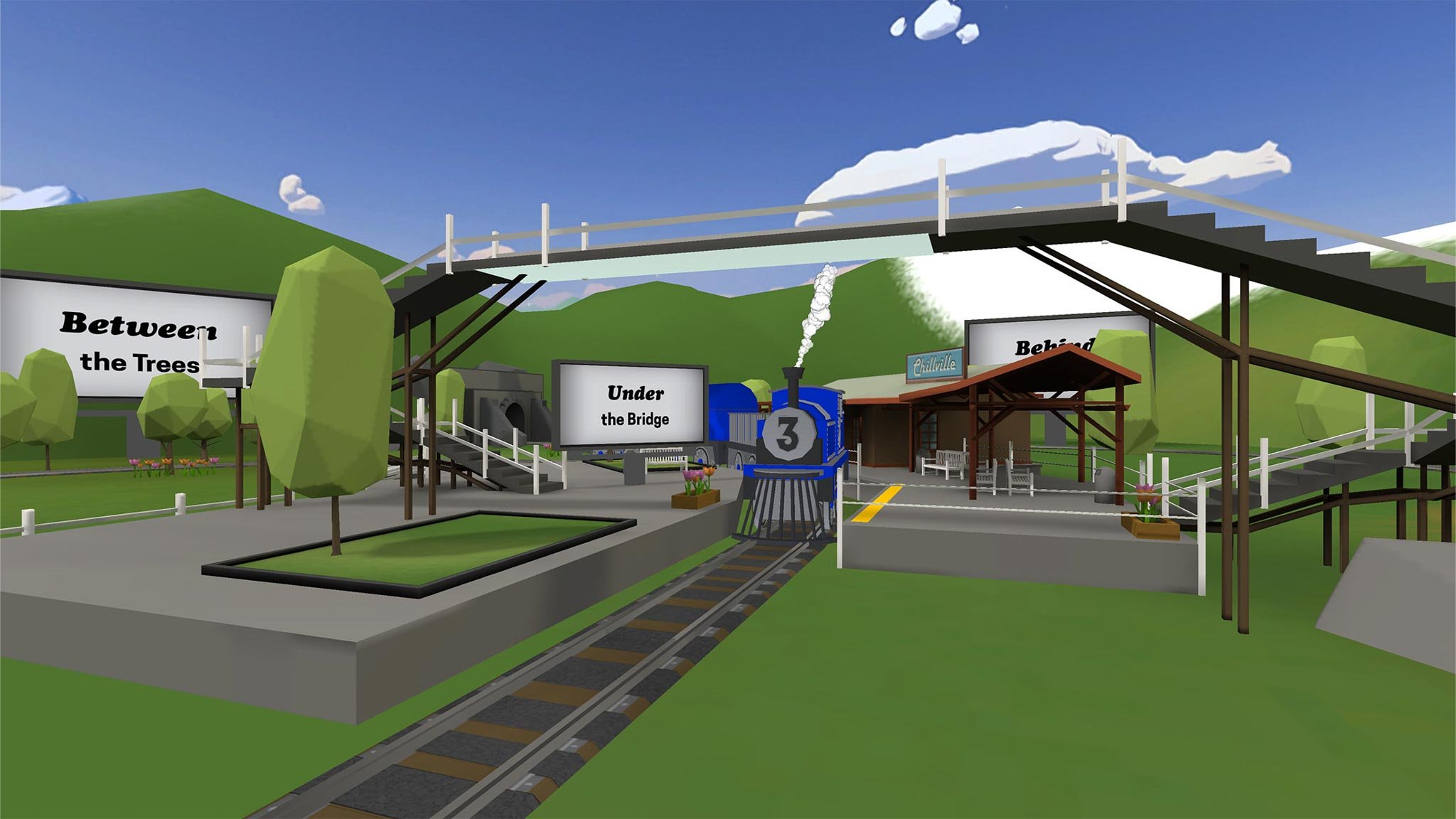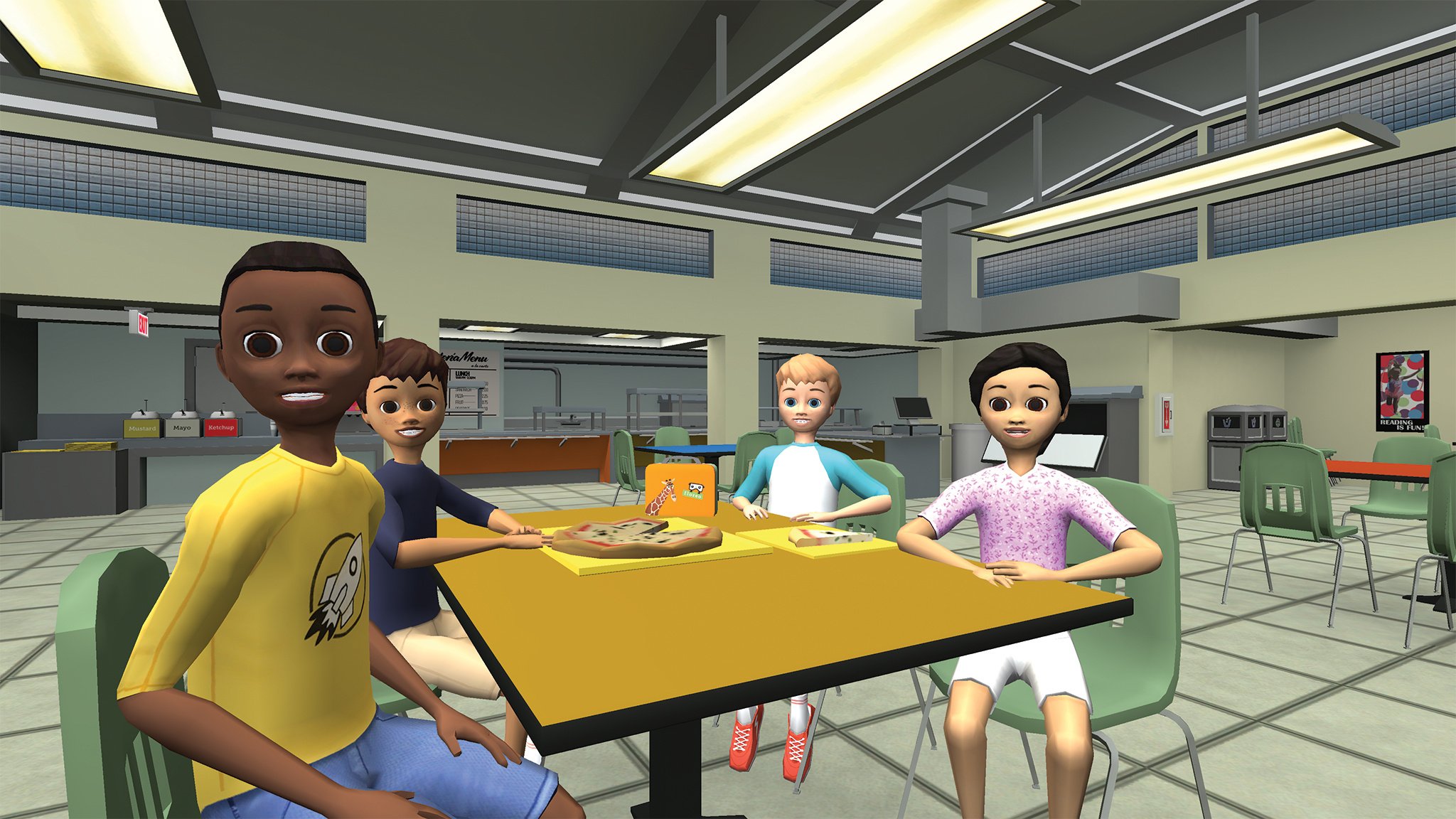Many schools, therapy clinics, and even family homes have been adapted with a sensory room or sensory space where neurodiverse individuals can go to regulate their systems. Providing individuals with an immersive space where they can regulate is a fairly common strategy, and these sensory rooms are sought-after spaces. Moreover, every one that I’ve seen has been beautifully designed. That said, in some instances, using virtual reality as a mobile sensory space has advantages over a dedicated sensory room in a building. Consider this:
Physical space is often at a premium: Whether it is in a dedicated learning space (such as a school or clinic) or in a residence, it’s very rare to hear the phrase, “Well, this room is empty. I’m not sure what to do with it.” As a practicing SLP, I worked in a variety of settings and it was not unusual to find myself conducting therapy in a shared office space, in the corner of a school cafeteria, or even a hallway. When you use VR as your "sensory room", you don't need to take up space in the building. Instead, you provide your Learners with a virtual space for them to decompress. Converting a corner of a classroom, for example, to a large aquarium to Find the Fish or a forest to do some Peaceful Painting may mitigate some of those physical space issues.
Individualization: For some Learners, their internal “engine” may tend to run a bit high or a bit low from time to time. Having the added bonus of being able to personalize a sensory space for an individual can be hugely advantageous. In contrast to the one-size-fits-all sensory room, VR can provide alerting spaces or calming spaces, depending on what might help a Learner in the moment. We know from our own personal experiences that when we are feeling dysregulated, we find it difficult to focus and learn. So, having a customized space to retreat to, even for a few minutes, can be very refreshing. Flying above some Snowy Landscapes or practicing a breathing routine in Breathing Train in Floreo might be just the thing your Learner needs.
Safety considerations: As people who recognize the subtle signs of your Learners very well, you can spot when your Learner is on the edge of becoming dysregulated. When the situation is on that edge, helping your Learner move to another physical location to get to a Sensory Room in the building, may present some risk, to both you and the Learner. Instead, being able to bring the "Sensory Space" to the individual, can offer a safer alternative. (Of course, if your Learner is already highly agitated, introducing VR could be problematic. Always make sure your Learners are safely experiencing virtual reality.)
Portability: Floreo can be a great travel accessory when on an all-day trip. Imagine you and your Learner are going out for a day of adventure. Even an outing that is built around having fun and learning can result in someone feeling overstimulated and/or overly tired. Bringing Floreo with you on the trip, allows you to instantly transport an individual to a familiar and inviting space in order to reset for the next part of the day. Just make sure you have access to wifi (a mobile hotspot will do) and that you find a safe space for your Learner to sit and turn around to get the full effect of the Snowfall, the Crystal Cave or another Floreo lesson.
Set You and Your Learner up for Success: Mindfulness practices work best when they are done regularly. We need to practice them when we are calm, so that we can access them when we are not. For example, if you bring Floreo with you on a field trip, but your Learner has not used any of Floreo's Emotional Regulation experiences, it will probably be less effective than if you have practiced them at home or at school. With practice, your Learner knows what to expect when using Floreo. So, make the Emotional Regulation experiences a regular part of your routine and then capitalize on them when you really need them. Floreo has Emotional Regulation content that can be used by individuals of any age and who present with any language level.






-1.png?width=550&height=250&name=Untitled%20(3)-1.png)